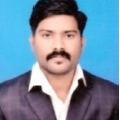
Prabhu Bevinamarad
Work place: Department of Computer Science and Engineering, BLDEA’s V.P. Dr. P.G. Halakatti College of Engineering and Technology (Affiliated to Visvesvaraya Technological University, Belagavi-590018, Karnataka), Vijayapura, Karnataka 586103, India
E-mail: prabhubev@gmail.com
Website:
Research Interests: Image Processing, Deep Learning, Image and Sound Processing
Biography
Mr. Prabhu Bevinamarad completed his B.E. in Information Science and Engineering and M.Tech. Computer Science and Engineering from Visvesvaraya Technological University, Belgaum, Karnataka, India, in 2008 and 2013, respectively. Presently he is pursuing a P.hD. in Computer Science and Engineering from Visvesvaraya Technological University, Belgaum, and Karnataka, India. His research interests include Deep learning, digital image and audio forensics.
Author Articles
Copy-Move Forgery Detection and Localization Framework for Images Using Stationary Wavelet Transform and Hybrid Dilated Adaptive VGG16 with Optimization Strategy
By Prabhu Bevinamarad Prakash Unki Padmaraj Nidagundi
DOI: https://doi.org/10.5815/ijigsp.2024.01.04, Pub. Date: 8 Feb. 2024
Due to the availability of low-cost electronic devices and advanced image editing tools, changing the semantic meaning of a particular image has become straightforward by employing various image manipulation techniques like image copy-move, image splicing and removal operations. The tampered images with this sophisticated software are rich in visualization, making the modifications invisible to the naked eye. Detecting these image alterations is laborious, time-consuming, and often yields inappropriate results. The current techniques use conventional square, slide regular, and artifacts procedures to identify image deviations to combat image forgery practices. Still, these techniques exhibit problems related to generalization, training and testing, and model complexity. So, in this paper, a novel image forgery detection and localization framework is implemented using stationary wavelet transform (SWT), and a Hybrid Dilated Adaptive VGG16 model with optimization is introduced to classify forgery images and localize the forgery regions present in an image. Initially, the proposed framework processes the input image with SWT to decompose an image into different subband and further divide it into patches. After that, the hybrid dilated adaptive VGG16 Network (HDA-VGG16Net) is built to extract the deep image features from the patches. Later, the Hybridized Tuna Swarm with Bald Eagle Search Optimization (HTS-BESO) technique is applied to optimize the VGG16 parameters. Finally, feature matching is formed using multi-similarity searching to recognize whether the input image is forged or original by locating forgery regions. The evaluation results are compared with existing forgery detection approaches to ensure the efficiency of the developed model by considering multiple performance measures.
[...] Read more.Other Articles
Subscribe to receive issue release notifications and newsletters from MECS Press journals